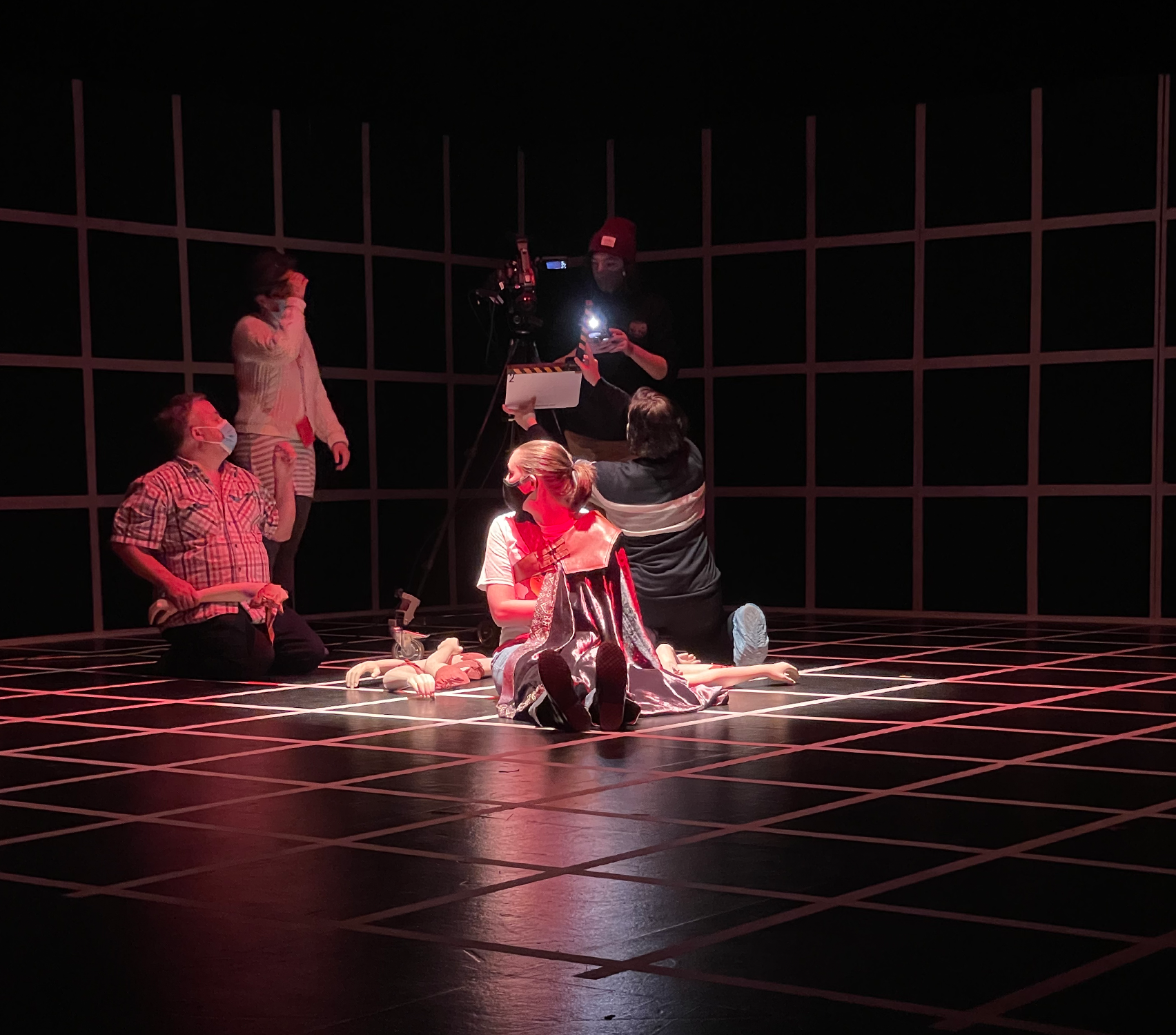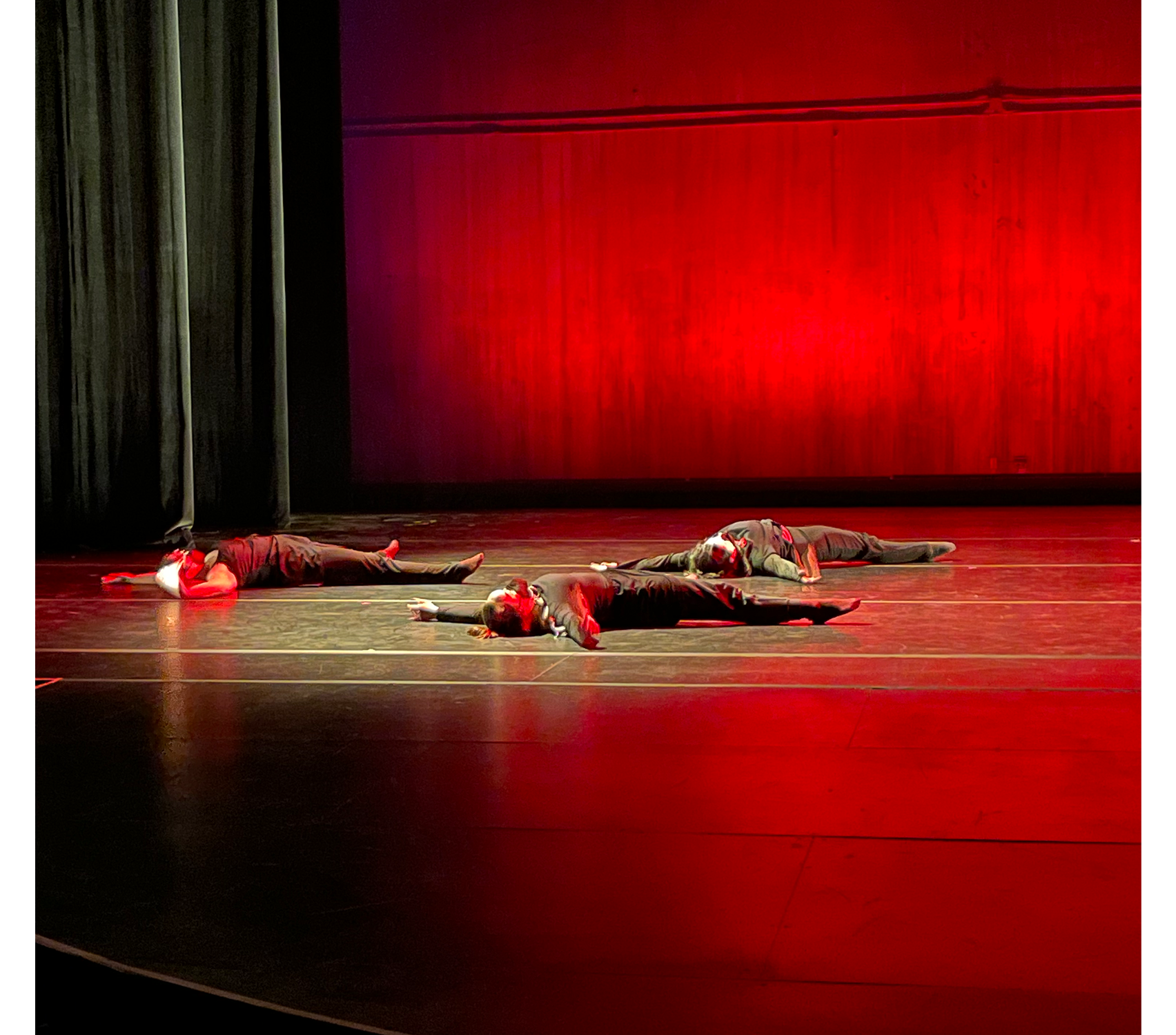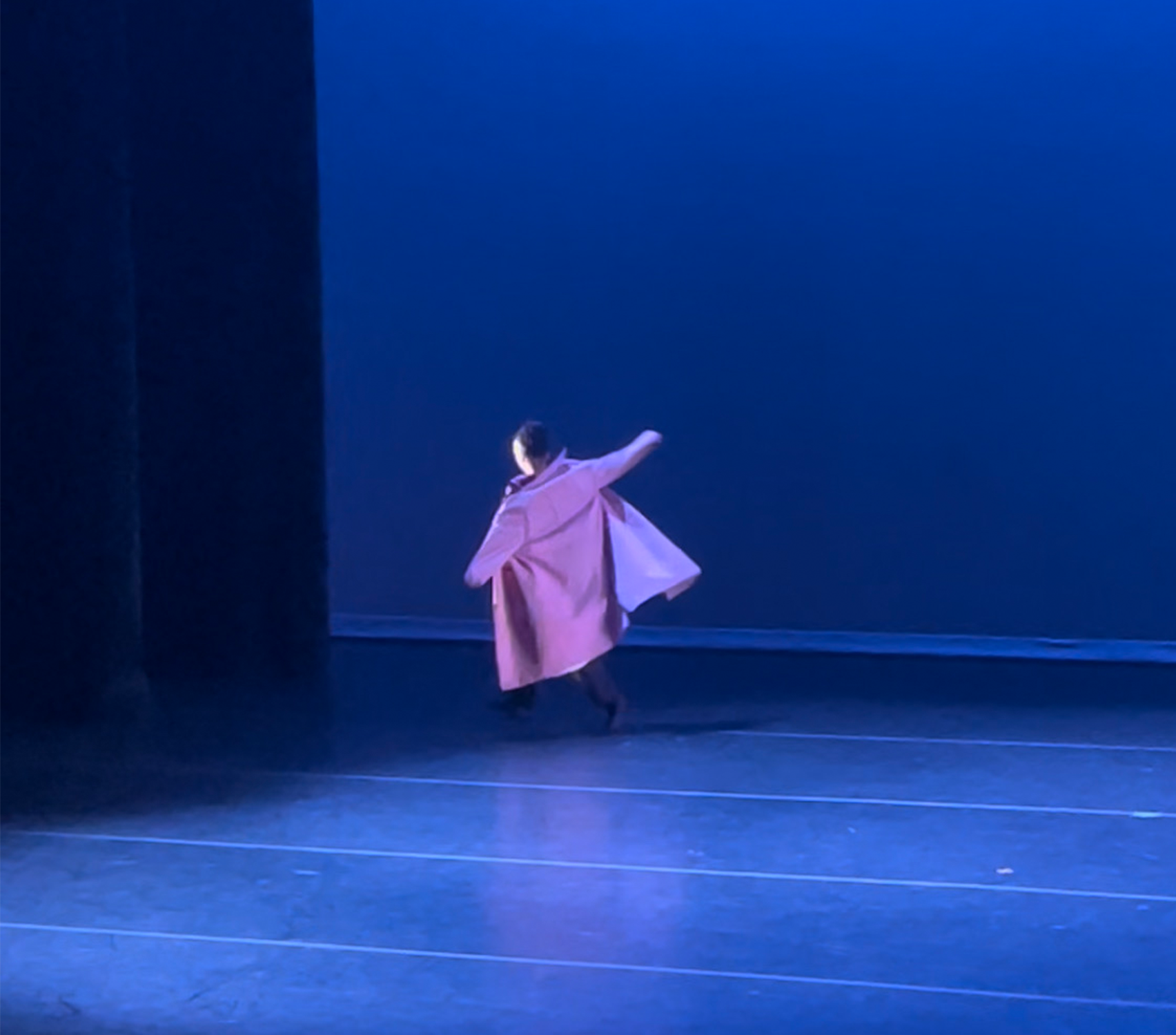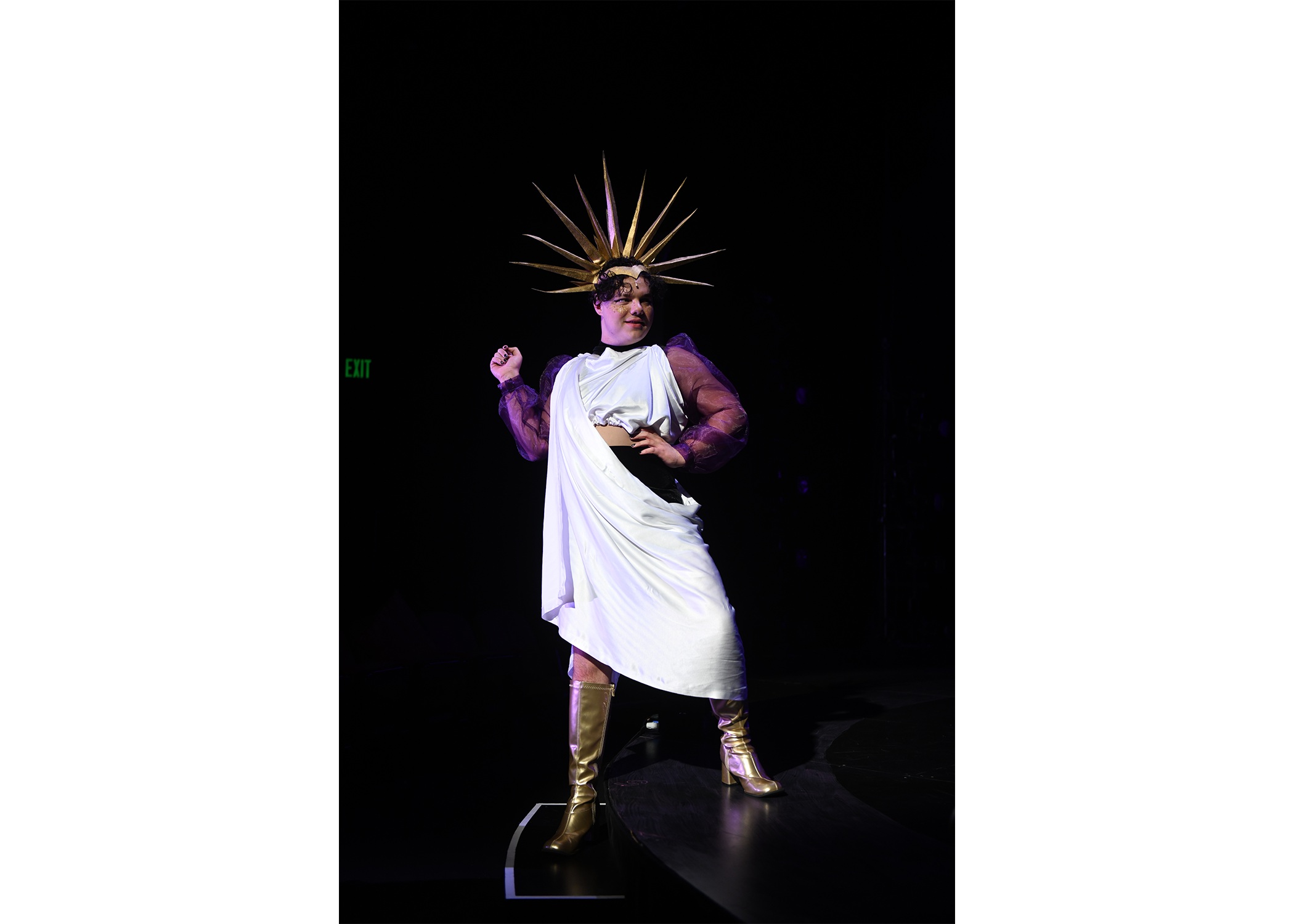Productions
Creative Team
Director: Rich Gray
Music director: Rhyonna Rosales
Choreographer: Charlie Johnson
Stage Manager: Alex Walker
Asst. SM: Emily Grierson
Scenic Designer: Paige Arseneau
Lighting Designer: Cami Taliaferro-Barber
Co-Costume Design: Caden Green and Elsa Goodmon
Photographs provided by: Winnie
Cornish College of the Arts’ take on the Broadway show “Head Over Heels” follows all the mixed aesthetics of the show, showcasing the club vibes of the 80s Go-Gos music and the silhouettes of the Elizabethan verse. This production doesn’t shy away from conversations of gender, sex, and contemporary romance in this upbeat rock musical.
When designing the costumes for HoH, m;y co-designer and I considered the textures and layering of the 80s punk movement to compliment the more rigid silhouettes of the Elizabethan era. We play with androgyny in our nonbinary characters as well as hidden pride flags in our LGBTQIA+ roles. Our goal was to emphasize the characters personal journeys as well as their relationships to one another.
Tony Caraveo “Musidorus”
Musidorus’ design takes inspiration from a mix between a rustic shepherd and a 70’s hippie. He wears neutral tones befitting his station, with ripped skinny jeans and a studded belt to modernize him. He embodies rustic romanticism with his open peasant shirt and fringe vest.
Franco, Fisher, and Peter Schaffer “Sheep”
Tony Caraveo “Cleophila”
In an attempt to win over Princess Philoclea, Musidorus transforms into the Amazonian Warrior ‘Cleophila’. Cleophila takes inspiration from the leather and silver armor of the Amazon with a fitted breastplate overtop a padded bra to convince the princess’ family and a classic paneled skirt. The ensemble is fitted with a large velcro opening in the back for his twenty-second quick change, the fastest in the show.
Carolyn Scherbinske “Mopsa”
The faithful handmaiden of Princess Pamela and daughter of the king’s advisor, Mopsa takes inspiration from the music of the show and the punk aesthetic of the all-girl rock group. She wears a red utilikilt and grey tank, inspired by silhouettes of modern queer women. She is outfitted with two appliques, a broken heart across her chest and a spiral snake on her back, an allusion to her true parentage which is revealed in the finale.
Levi Redmill “Dametas”
Right hand to the king, Dametas takes on a hopeless romantic aesthetic with his soft blue shirt and red silk scarf. An ‘aging Romeo’, Dametas longs for his ex-wife Mira and troubles over his growing daughter, Mopsa. Of course, he is not immune to the punk aesthetics of the show and underneath his open doublet sports striking leather pants and tall black boots.
Rachael Spencer “Philoclea”
Philoclea is a princess of Arcadia, considered plain next to her sister Pamela. Philoclea’s secret admiration for shepherd Musidorus is expressed in her flower crown and soft green silk of her gown. She wears a classic ‘Juliet’ silhouette, her gold trim and purple accents alluding to her royal status. She stands in contrast to her corseted mother and sister with her loose flowing skirts and soft gradient.
Tony Caraveo “Golden Stag”
After rising from the dead - sorry spoilers - Cleophila returns on the back of a golden stag. Their look is a combination of the Greek/Amazonian aesthetic with a golden chiton and himation, but with Musidorus’ hair and androgynous silhouette. This final look is Musidorus embracing both his masculine and feminine appearances and merging them into one identity that knows no gender.
Creative Team
Director: Rich Gray
Music Director: Claire Marx
Choreographer: Tinka Gutrick-Dailey
Director of Photography: Krya Del Moral
Stage Manager: Emily Doorenbos
Asst. SM: Larcyn Burnett
Scenic Designer: Robin Logerstedt
Sound Designer: Veronica Lutz-Hibbard
Lighting Designer: Brandon Cullinan
Costume Designer: Madison Gholston
Asst. Costume Designer: Elsa Goodmon
Cornish College of the Arts’ take on the Broadway show “Pippin” takes a new direction during the COVID-19 pandemic, creating a musical film using in-person masked filming. For this format, the design of this production turns the ancient world of “Pippin” into a modern, virtual reality video game. The grid-like set design, stark lighting and contemporary costumes bring this video game version of the classic story of Charlamagne’s son to life.


































